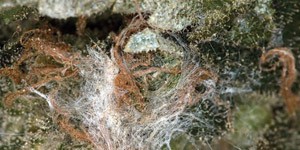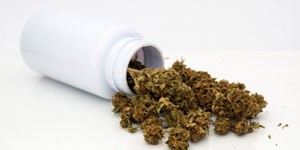In 2022, we should start to consider a few well-documented key processes of hemp and other C. Sativa strains.
Non-psychoactive cannabinoids, such as CBD and CBG, are found commercially in almost every market: terpenes are used as fragrances in cosmetics and flavours in beverages and edibles; the legal use of the cannabis plant has reached a new level.
Methods and products exploiting cannabis bark, fibres, oils, and proteins (from seeds) have convinced the industry that the market base is real and substantial, and the scientific literature surrounding the plant has grown accordingly.
Focusing on cannabinoids, or rather phytocannabinoids, we must remember that the plant cannot synthesize bioactive neutral forms like cannabidiol (CBD) or cannabigerol (CBG). Rather, the plant produces their acid precursors, CBDA and CBGA, which may eventually ¨decompose¨ – naturally or artificially – into the active neutral forms.

The Chemical Reaction
That specific ¨decomposition¨ is called "decarboxylation" and the effort to control and manipulate its speed has led to a deep understanding of its detailed geometry.
The reaction is technically very simple: by heating the acid molecule, the neutral form is generated by the loss of a carbon dioxide molecule (CO2).
The reaction occurs on absolutely isolated molecules (acids in a gaseous state) and also in tandem with a vast number of solvation reactions that naturally occur in cannabinoid acids in real-world solutions like resins, including the ones on biomass surfaces, extracts, isolates, intermediates, and finished products.
Data collected on extracts at different temperatures shows a relatively simple pseudo first-order reaction. (1)
Detailed simulations of the atom movements during reactions showed much more complex behaviour: depending on the specific acid, the reaction may follow up to 6 simultaneous paths, not including side reactions, that converge on the same neutral product. (2)

The presence of partner molecules during the reaction can modify the relative speed of these components, even in controlled and simulated environments.
The controlled decarboxylation of actual solutions (including pure solutions) must be considered as an experimental task that requires the analyst to follow the development of neutral forms.
Conditions must be tuned and tailored for each system and each crude product.

Decarboxylation for Everyone
From a simple, general perspective, decarboxylation occurs by heating acid cannabinoids and is commonly used to transform CBDA on commercial hemp buds to generate CBD, for both the market and personal use.
The reaction is spontaneous over time, but is commonly accelerated using domestic equipment such as ovens.
The ease of heating biomass has generated an abundance of guides and tutorials on how to ¨activate CBD¨ by ¨baking¨ hemp buds; a process that both activates the cannabinoids (complete decarboxylation may occur in a few hours) and degrades the biomass.
Lower temperatures require longer times but may result in less oxidated material.
The retention of terpenes and aromas is critical: these compounds are largely lost during heating, in a proportion of around -40% w/w.
All major cannabinoid acids – CBDA, THCA, CBGA and the varinic variants (CBDVA, THCVA and CBGVA) – undergo decarboxylation, but at different speeds.
Data on THCA, CBDA, and CBGA in the same extracts (under the same conditions) show that the decarboxylation speed of THCA is almost double that of CBDA and CBGA, which are comparable.
Another interesting factor is that the decarboxylation to THC is much cleaner: after achieving total decarboxylation, total THC was just 9% lower than the theoretic value.
Conversely, CBD and CBG were found to be, respectively, 18% and 53% lower.
The loss is partially explained by the structure of the precursors: CBD and CBG structures are less rigid and the activated states that lead to the neutral forms can generate a wider spectrum of interactions with other compounds, creating other molecules.

Worth it, or Risky?
It depends.
The activation of acid cannabinoids is necessary to develop the active compounds that interact with our body, but the process itself may lower the quality of the biomass (in taste and appearance), reduce the amount of beneficial terpenes, and generate potentially harmful products.

From this point of view, smoking cannabis is not a viable solution. Even with a state-of-the-art filtering system, the combustion of biomass generates a frightening number of toxic/poisonous compounds that equal or even surpass the beneficial properties, not just of cannabis, but of any other possible medical blend.
Vaporization, however, is starting to reach the correct standards to generate reliable products.
Vaporizers come in many shapes and types, but are all made of 3 main elements: a recipient for the biomass, a heating element, and a tube for inhaling.
The temperature at which the heating element is kept makes the difference between vaporization and combustion.
A good vaporizer can deliver cleaner aerosols with minimal filtering.
Decarboxylation happens directly on the heating element and neutral cannabinoids are assimilated directly together with terpenes and other compounds.
Designed products such as oils, edibles, and e-liquids are usually formulated starting with industrially decarboxylated extracts that should be tested and certified for the corresponding product and market.
Producing edibles at home usually involves baking the weighted biomass in the oven. Recipes found online usually underestimate the decarboxylation times of dried materials, yet following a written procedure usually leads to satisfactory results.
The activated biomass is subsequently extracted or powdered to be blended/cooked with other ingredients.
Bibliography:
(1) Wang M, Wang Y-H, Avula B, Radwan MM, Wanas AS, van Antwerp J, Parcher JF, ElSohly MA, Khan IA (2016) Decarboxylation study of acidic cannabinoids: a novel approach using ultra-high-performance supercritical fluid chromatography/photodiode array-mass spectrometry, Cannabis and Cannabinoid Research 1:1, 262–271, DOI: 10,1089/can.2016.0020
(2) Weiying He, Paul J. Foth, Markus Roggen, Glenn M. Sammis, Pierre Kennepohl (2020); Why is THCA decarboxylation faster than CBDA? an in silico perspective Department of Chemistry, The University of British Columbia & Department of Chemistry, University of Calgary (Canada)


